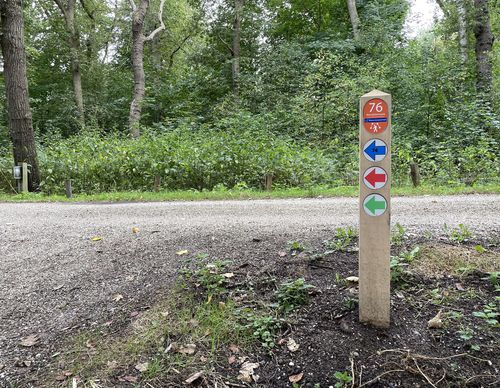Starting point De Glip Heemstede

Routes from this starting point
-
Hartekamp Route (purple)
Unpaved path (partly) No dogs allowed - 4.71km
-
Overplaats Route (black)
Unpaved path (partly) No dogs allowed - 2.2km
-
Prinsen Route (orange)
Unpaved path (partly) No dogs allowed - 3.71km
De Glip hamlet in Heemstede was known as Princebuurt until the 18th century, apparently after Prince William of Orange. Located near the Haarlemmermeer, it would later be given the name 'De Glip' because of the smuggling that 'ontglipte' (escaped) the toll charges on the Spaarne. With bleach houses, farms and a grain mill, De Glip was the core of Bennebroek at that time. The striking hull of the mill still stands. With a view of the Haarlemmermeer, the beach ridges in the area were popular with wealthy Amsterdam residents who set up country estates there. The tram house at the bridge over the Glippervaart is a reminder of the Haarlem–Leiden steam tram that ran here until 1932.
- The Overplaats Route (black) from starting point De Glip in Heemstede leads through the Overplaats van Landschap Noord-Holland country estate, wooded with ancient trees, and along the marshy land on the shore of the former Haarlemmermeer.
- The Prinsen Route (orange) from starting point De Glip in Heemstede leads along the hull of De Nachtegaal windmill, the Ringvaart of the Haarlemmermeer Polder, the Merienberg, Groenendaal and Huis te Manpad country estates, and the Glipperzandvaart.
- The Hartekamp Route (purple) from starting point De Glip in Heemstede leads over the Hartekamp and Overplaats country estates, which once made up one estate. In the 16th century it was still a farmstead but, over the centuries, it became an increasingly stately country estate with orangery and gardens. The eponymous Linnaeus Garden is where the famous botanist Linnaeus was head gardener and worked on classifying organisms when he was personal physician to the 18th-century owners of the estate.

